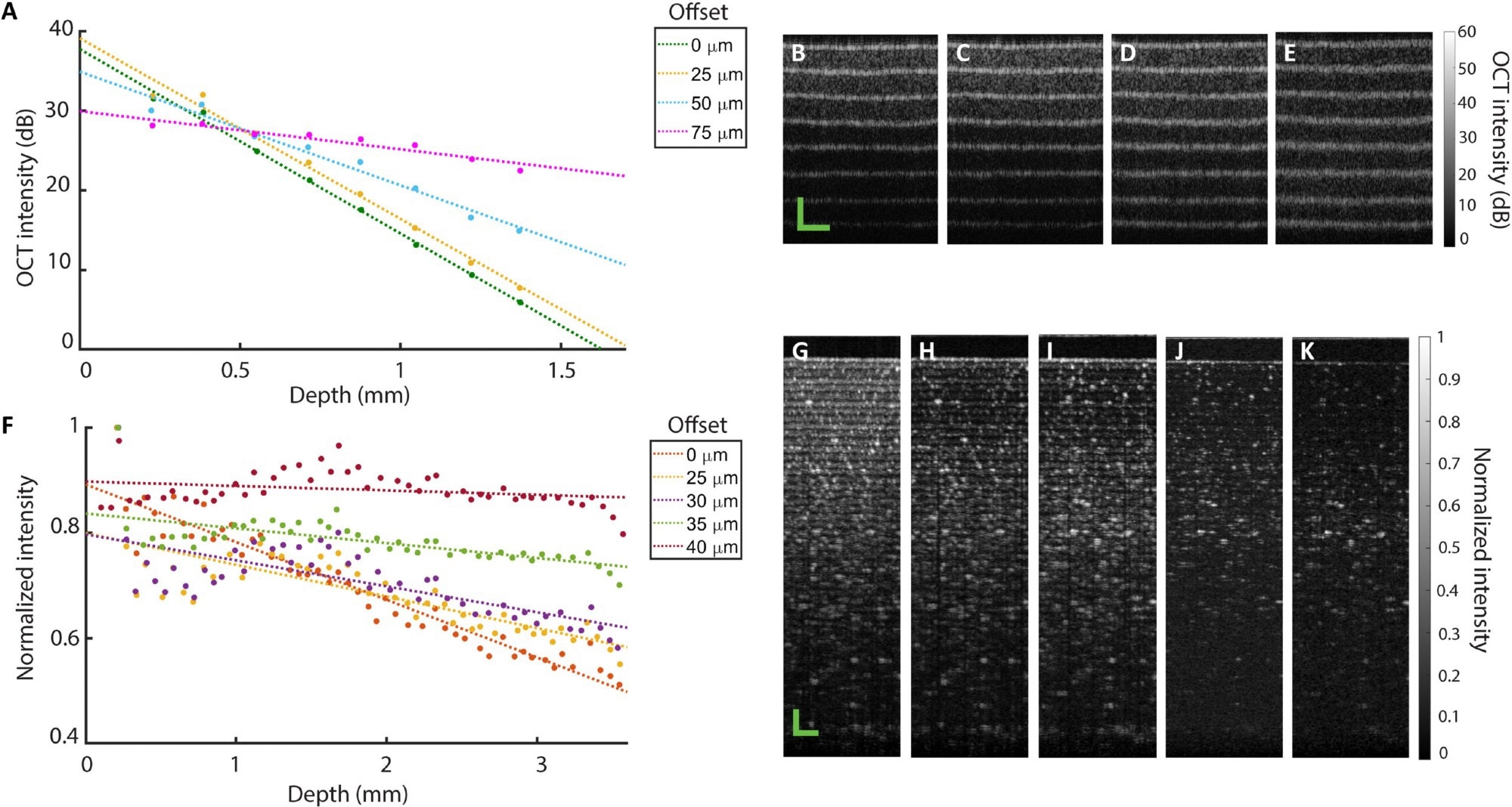Technological advancement in optical coherence tomography (OCT), one of the most significant types of light imaging, has been made in collaboration with the University of St Andrews. This advancement can potentially revolutionize applications in ophthalmology, dermatology, cardiology, and the early detection of cancer.
 SO-OCT demonstrates reduced attenuation with increasing offset in layered phantoms. Image Credit: University of St. Andrews
SO-OCT demonstrates reduced attenuation with increasing offset in layered phantoms. Image Credit: University of St. Andrews
The new study, which was led by an international team of experts from the University of Adelaide in Australia, the Technical University of Denmark (DTU) in partnership with the Aerospace Corp in the United States, and academics from the School of Physics and Astronomy at the University of St. Andrews, was published in Science Advances on Friday, 7th July, 2023. It could assist with improving disease diagnosis.
Light imaging has made amazing strides thus far. With its unprecedented mix of simplicity, ease of use to retrieve highly resolved image information and versatility, its usage in biomedical imaging has advanced to new heights in the past ten years.
The recovery of information from depth is one of the ongoing difficulties. a problem since information at depth is obscured by the light scattering in tissue.
OCT relies on light being backscattered within the sample; this happens, for instance, when light passes through several layers of cells. It is similar to the well-known occurrence in nature when light is scattered in a fog of water droplets with a different refractive index than the surrounding air, distorting the view.
It is challenging to see through the fog due to the dispersion. Similarly, biological tissue contains cells (membranes and even smaller sections) that scatter light, making imaging difficult. The signal from intervening tissue and other factors makes it extremely difficult to obtain a detectable signal from depths more than 1 mm.
According to popular thinking, light that has undergone a single backscattering event dominates the OCT signal, whereas light that has been scattered (scrambled) repeatedly damages image formation.
A different theory was found by the scientists, according to which selectively collecting such multiply scattered light can enhance depth contrast in images, particularly in samples with high scattering. They demonstrated how shifting the light supply and collection channels could be easily implemented with minimal additional optics.
The results of our study could be the start of a new way of thinking about OCT imaging. Its so exciting to contribute to such a technological breakthrough in the well-established OCT field.
Gavrielle Untracht, Study First Author and Postdoctoral Researcher, Technical University of Denmark
Professor Kishan Dholakia, from the School of Physics and Astronomy at the University of St Andrews, added, “Our study breaks norms in optical imaging and I believe heralds a new path to recovering information at depth. OCT is a world established method to gain useful information on human health—our approach can enhance this even further.”
Dr. Peter Andersen, study co-corresponding author from DTU, further stated, “The unique configuration, supported by our modeling, should redefine our view on OCT signal formation—and we can now use this insight to extract more information and to improve diagnosis of disease.”
The research team is confident that their innovation will challenge conventional thinking and revolutionize the process of recovering images from great depths.
The team is strengthened even more by having already granted and registered intellectual property in this field, and they are eagerly awaiting translation. By the end of the decade, the OCT market, expected to be worth $1.3 billion in 2021, will have tripled.
Without the assistance of financing from the UK, EU (H2020), and the Australian Research Council (ARC) in Australia, this ground-breaking development would not have been possible.
Journal Reference:
Untracht, G. R., et al. (2023) Spatially offset optical coherence tomography: Leveraging multiple scattering for high-contrast imaging at depth in turbid media. Science Advances. doi:10.1126/sciadv.adh5435.